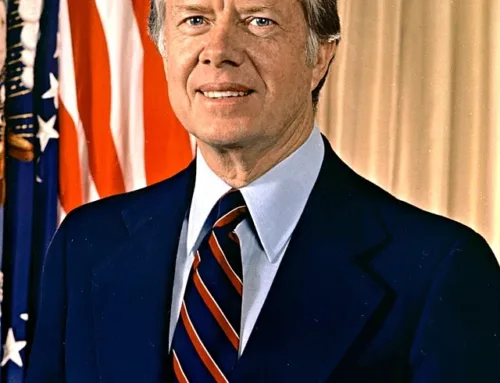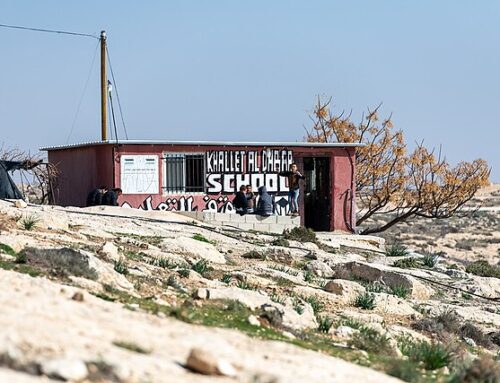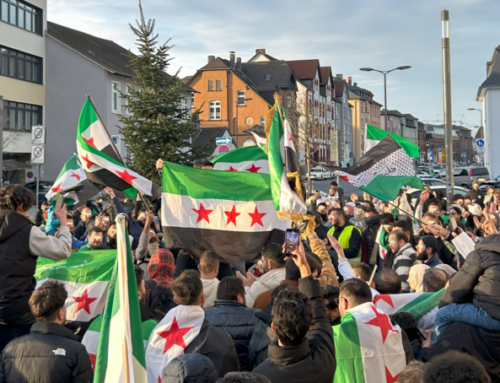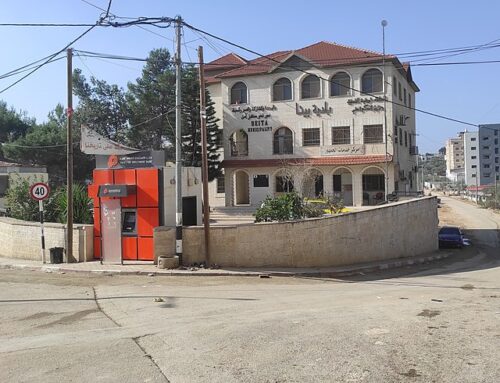These three photos are from three realities only thirty minutes apart (Hebron is farther away, but not by much). The first is the Old City from the rooftop of the Austrian Hospice in the Muslim Quarter. The second is the Shuafat refugee camp. The last is a view of the Hebron area from a hilltop where the Palestinian activist group Youth Against Settlers is located.
Borders are felt powerfully here — geographically, spiritually, and culturally, and through gender and dress. ‘Sterile zones’ in Hebron have turned area two into a ghost town. The separation wall in Shuafat cuts the area off from municipal services despite it being within Jerusalem’s municipal boundary. Twice daily approximately 6000 people cross the Shuafat checkpoint into the rest of Jerusalem.
Where I live on the 1967 Green Line just west of Damascus Gate, there are also subtle borders. I cross the street and Palestinians surround me. I can speak Arabic and eat Palestinian food. If I cross the street heading West, I speak Hebrew, see men chasing after their kippas that have flown off in the wind and go the main market (Mahane Yehuda Shuk). The Old City mimics this feeling as four quarters seamlessly blend together until you suddenly realize the demographic change.
I write this to give you an idea of life here as an intern. I am a 26 year old Canadian woman, who was raised culturally Jewish and with no sense of politics in Israel. Through my time in social justice work in Halifax, Nova Scotia and Peterborough, Ontario I became interested in learning about the conflict. I am now learning how to use the neutral position of being diasporic and non-religious in coexistence work in Palestine and Israel.
Living between two worlds for the last month has been incredibly humbling, informative and inspiring. It reflects the socio-economic and physical disparities in Canada and the USA, but in a different way unique to the circumstances.
I am participating in Achvat Amim or “Solidarity of Nations” — a Jewish identity building program for diasporic Jews interested in politics, culture and heritage. I do a volunteer placement three times a week.
Through Rabbis for Human Rights, I am working with Jahalin Bedouin near Abu Dis helping a woman run an informal English and art class. One of the days I spend with Muslala Art Collective, helping to create this year’s watermelon festival which makes a space for Palestinians and Israeli Jews to gather and share sweet fruit.
Twice a week I have Arabic and Hebrew language classes. We have a long workshop day to talk about history and politics and go on trips to see different parts of Israel/Palestine.
Finally, all of the participants of Achvat Amim spend one day of the week at Yad Be-Yad Bilingual School, one of only five non-segregated schools that teaches children about each other’s cultures and religions as well as Hebrew and Arabic.
I will be conducting interviews with people I meet for the weekly Partners for Progressive Israel Podcast. I am very excited to start this phase of my learning here.
I will also be creating artwork inspired by people and the landscape here. Check back soon for a post with my artwork.
My previous artwork can be found here. I am also an avid photographer and will often be updated here.
If you have any questions please feel free to e-mail me: cayenne.cooperart@gmail.com
Thank you to Partners for Progressive Israel for this opportunity.






Leave A Comment